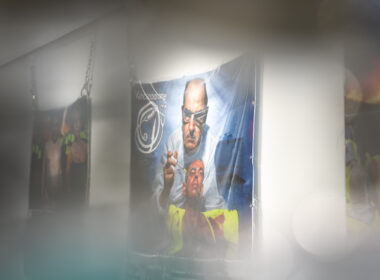Trust in institutions is dwindling, and the lines between professional and personal lives are increasingly blurred. One thing, however, has become abundantly clear: corporate branding is losing its grip. Consumers are no longer swayed by faceless logos or polished taglines. Instead, they are gravitating towards individuals who embody authenticity, transparency, and relatability.
The Shift from Corporate Giants to Human Voices
For decades, corporate branding was the gold standard. Companies spent millions crafting the perfect image, hiring top agencies to create campaigns that would resonate with the masses. But in the digital age, where information can be accessed in a twinkle of an eye, consumers are looking beyond the corporate veil. They want to connect with real people—leaders, entrepreneurs, and influencers—who share their values and experiences. Are we witnessing the downfall of the corporate giant, or is this just an evolution in branding?
More Like This:
Never Knew Gardening Had Such Healing Powers
Authenticity Over Slick Campaigns
Today’s consumers, particularly Millennials and Gen Z, are hyper-aware of inauthenticity. They can spot a marketing ploy from a mile away and are quick to call out brands that don’t practice what they preach. In contrast, personal brands thrive on authenticity. Whether it’s a CEO sharing their failures on LinkedIn, an influencer being transparent about their sponsored content, or a designer discussing their creative process on Instagram, it’s the human stories that are capturing hearts and minds.
When Corporate Branding Misfires: Why Gillette’s Backlash Shows the Rise of Personal Branding
In 2019, Gillette, a brand long associated with masculinity and traditional male grooming, launched “The Best Men Can Be” campaign. The ad aimed to address toxic masculinity and challenge traditional male stereotypes, but it received mixed reactions. While some praised the brand for taking a stand, others felt the campaign was preachy and disconnected from Gillette’s core identity. The backlash was swift, with consumers taking to social media to express their displeasure, and some even boycotting the brand. It highlighted the challenges of corporate branding when it tries to engage with social issues without a strong personal touch or authentic connection to its audience.
The Power of Influence
In the past, corporations relied on their reputation and market dominance to influence consumer behavior. Today, that power has shifted to individuals with strong personal brands. Influencers, thought leaders, and entrepreneurs are shaping consumer opinions and driving purchasing decisions more effectively than traditional corporate marketing. When was the last time you bought something because of a brand’s ad, versus a recommendation from someone you trust online? It’s a stark reminder that influence is no longer tied to corporate power but to personal credibility.
Building Trust in a Distrustful World
Corporate scandals, data breaches, and the relentless pursuit of profit have eroded trust in big brands. In contrast, personal branding is built on trust. It’s about being consistent, transparent, and relatable. When consumers feel like they know the person behind the brand, they are more likely to engage, support, and remain loyal. Are corporations capable of building this level of trust, or are they inherently too disconnected from their audience?
For corporations, the shift towards personal branding presents both challenges and opportunities. Companies that want to stay relevant must humanise their brands, empower their leaders to build strong personal brands, and engage with their audience on a more personal level. This means moving away from impersonal corporate messages and towards storytelling, transparency, and genuine interaction. Let’s unpack each of these points, especially for fashion brands. But the question remains: can corporate giants adapt quickly enough, or will they be left behind by more agile, personal-driven brands?
The future of branding your fashion products
Humanise the Brand
Encourage key figures within the company—designers, CEOs, and creative directors—to build strong personal brands. Their stories, values, and perspectives can connect with consumers on a personal level, making the corporate brand more relatable and trustworthy. Move beyond traditional advertising and use storytelling to share the brand’s journey, challenges, and triumphs. Consumers want to know the people and processes behind the products they buy.
Embrace Transparency
Today’s consumers care about where their clothes come from. Be open about the sourcing of materials, labour practices, and manufacturing processes. Transparency builds trust and loyalty. With growing awareness of environmental issues, fashion brands must prioritise sustainability. Highlight efforts to reduce waste, use eco-friendly materials, and promote ethical production practices.
Foster Community and Engagement
Use social media not just to broadcast messages but also to engage in meaningful conversations with your audience. Create spaces where customers can share their experiences, provide feedback, and feel a sense of belonging. One more thing, partner with influencers who align with your brand values and involve customers in the design process through crowdsourcing ideas or limited-edition collections.
Focus on Personalisation
Use data to offer personalised recommendations, exclusive products, and tailored shopping experiences. Personalisation makes customers feel valued and understood. Shift towards a Direct-to-Consumer (DTC) approach that allows for greater control over customer relationships and brand narrative. This model often leads to better customer insights and more personalised service. Stay up to date on the latest in fashion, arts, beauty, and lifestyle by following FAB L’Style Magazine.
Evolve with Consumer Values
Stay attuned to shifting consumer values and be ready to adapt quickly. Brands that can pivot in response to changes in the market, whether it’s trends or cultural shifts, will thrive. Involve consumers in trendsetting. How? By listening to their needs and desires, brands can create products that are not only fashionable but also meaningful to their target audience.
Conclusion
Above all, redefine success metrics. Yes! Measure success not just by financial performance but by the brand’s impact on society, the environment, and customer well-being. This holistic approach can drive long-term growth and loyalty.
How Ulrich Gottlieb Uses Physical Theatre to Bridge and Heal Communities











